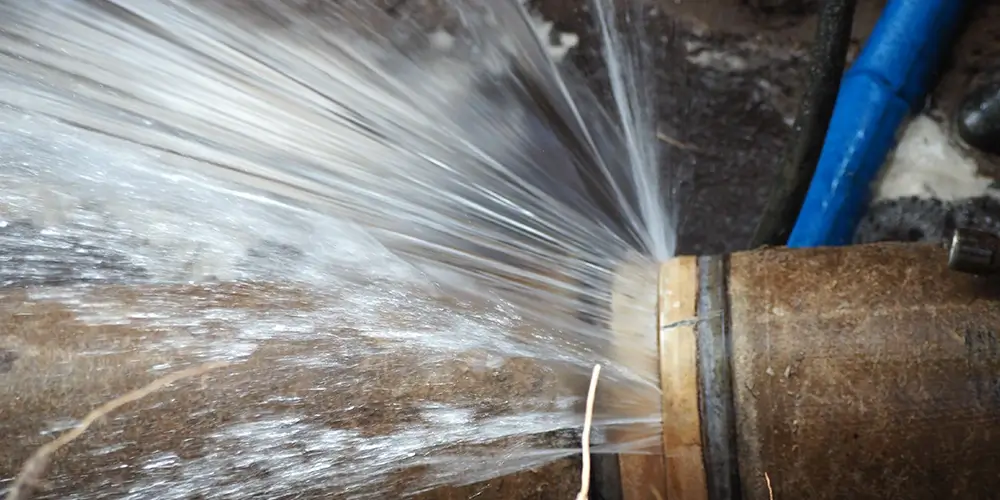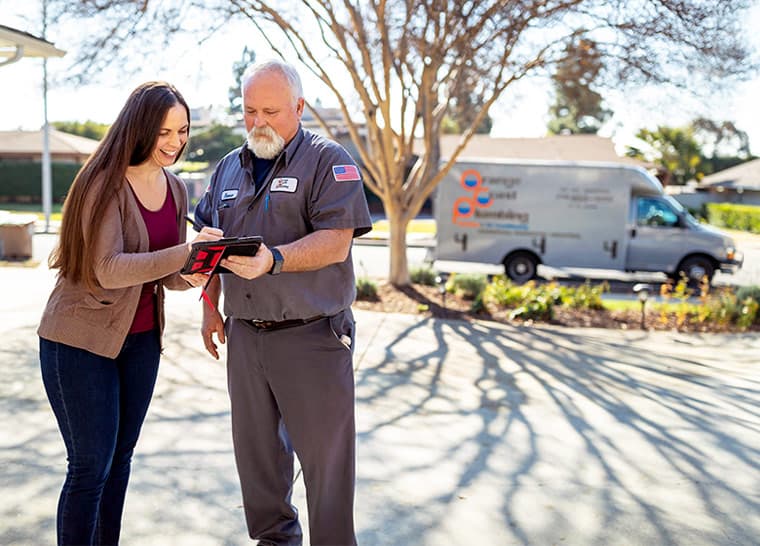A plumbing disaster, if you’ve ever experienced one, is unforgettable. Even traumatic.
Imagine your panic when the living room floods at 10 PM and the shut-off valve fails to stop the flow. Many plumbers offer 24-hour service. Still, they may not arrive in time to prevent damage to your furniture and walls.
You’re now facing a costly plumbing repair, a mold problem, and a massive cleanup job. If you’re lucky, insurance will cover it, but insurance can’t compensate for the disruption to your home.
Fortunately, plumbing disasters aren’t inevitable. Here are some simple things you can do to prevent flooded bathrooms, burst pipes, sewage backups, and other plumbing nightmares.
1. Respect your kitchen sink — it’s not a toilet
Never dump cooking grease or oil down the kitchen drain. Pour it into a collection jar and dispose of it in the trash. Grease and oil create an ever-expanding layer on pipes that catches food particles. A significant clog may be one BLT sandwich away.
Use a filter in the sink to catch food particles, and don’t pour coffee grounds or food scraps down the drain.
2. Inspect your pipes regularly
Check all visible plumbing pipes for signs of rust, corrosion, and wear and tear — problems that can lead to catastrophic pipe failure.
Older homes may have galvanized pipes nearing the end of their lifespans. Consider replacing or relining them, especially if you notice rust or corrosion. Cure-in-place treatments are more affordable than repiping, but repiping may be your only option once pipes burst.
Don’t wait too long to address pipe corrosion. Don’t entertain the delusion that old pipes will last another day. You may come home to a biblical deluge, with the animals lining up two by two.
3. Schedule periodic professional plumbing inspections
You can’t evaluate the pipes you don’t see. But a plumber can.
Schedule plumbing inspections every other year or so (less often for new homes, more often for older homes) to detect potential problems. Plumbers have pressure sensors, leak detection equipment, and specialized cameras to detect abnormalities, including breaks, cracks, tree root blockages, and corrosion.
Sewer lines can collapse due to age or loose soil, creating sewage backups in your home. A plumber can evaluate the condition of your sewer line without having to excavate it.
4. Know the location of the main shut-off valve; test it
Depending on distance and traffic, it may take an hour or more for an emergency plumber to arrive. If a pipe breaks and the contents of Lake Mead spill into your home, do you know how to shut down the water supply? Can you locate the main shut-off valve?
Make sure all family members know how to use it. (Sparky, the cat, gets a pass.) You might also consider installing additional valves throughout your home.
5. Maintain correct water pressure; install an automatic shut-off valve
Elevated water pressure degrades plumbing fixtures and can burst fittings.
Invest in a pressure gauge. Attach it to an outdoor faucet for a reading. If pressure is higher than normal, you’ll need to adjust your pressure regulator, which controls incoming water pressure from the street.
An adjustable flow control valve, which your plumber can install, will regulate flow based on demand or automatically shut off when something goes wrong – two key features in preventing water damage.
6. Clean your drains once a month
- Measure 1 cup of baking soda and 2 cups of white vinegar.
- Shake the baking soda into the drain, then pour in the vinegar.
- Let the mixture sit overnight.
- In the morning, rinse the drain with hot water.
You should now have a fast-draining sink or shower. This baking soda and vinegar treatment is less potent than commercial drain cleaners, but it’s non-toxic, safe for your pipes, and effective for maintenance.
7. Check and descale your water heater
A water heater with a thick layer of limescale works harder than it should. Drain and descale your tank once a year to reduce the chances of failure.
If you have hard water, consider installing a whole-home water softener or conditioner, which can improve the quality of your home’s water and extend the life of fixtures and appliances.
Water heater inspections should look for sediment accumulation, gas leaks, loose connections, anode rod corrosion, and rust.
8. Don’t flush anything besides toilet paper
Baby wipes, sanitary towels, cotton buds, and condoms can block your drainage system. Sewer pipes and septic tanks aren’t designed for them, so please stick to toilet paper. Any brand will do, unless it has the texture of plywood.
9. Know the limitations and risks of DIY repairs
We give a thumbs up to DIY drain maintenance, water heater descaling, and simpler plumbing tasks.
A definite thumbs down to DIY toilet installation, plumbing fixture relocation, and other major projects. The Dunning–Kruger Effect leads DIYers to overestimate their abilities.
A Google search for “DIY plumbing disasters” might indicate what’s in store. For the record, duct tape can’t solve every plumbing problem or restore your home when the pipes blow up.
Plumbers are put on earth for a reason — to protect DIYers from the ravages of DIY repairs. Call us when plumbing repairs exceed your skill set, especially when water, gas, and electrical systems interact.
FAQs: Maintenance to Preventing Disasters
Q: What are the common signs of a slab leak?
Wet spots on your floors, a sudden spike in your water bill, or the sound of running water when all taps are off can indicate a slab leak. Early detection can prevent significant damage.
Q: How often should I inspect my home for potential plumbing issues?
We recommend a plumbing inspection once a year. This routine check can identify potential issues before they escalate into major problems.
Q: Can a small leak lead to plumbing disasters?
Even a minor leak can lead to mold growth, structural damage, or a burst pipe, resulting in extensive damage.
Q: What maintenance steps can I take to prevent sewage backups?
Regularly inspect and clean your main sewer line, avoid flushing non-degradable items, and consider installing a backwater prevention valve to protect your home against sewage backups.
Q: How does hard water affect plumbing, and what can I do about it?
Hard water can cause mineral buildup in pipes and water heaters, reducing water flow and efficiency. Installing a water softener system can mitigate these issues and prolong the life of your plumbing.
Q: Is it necessary to replace old pipes, and how often?
We recommend replacing old pipes every 20-50 years, depending on their condition and material. Failure to replace aging pipes increases the risk of leaks and other plumbing disasters.
Q: How can landscaping affect plumbing, and how do I prevent issues?
Root intrusion from trees and shrubs can damage underground pipes. To prevent this, plant trees away from sewer lines or opt for slow-growing species with less invasive root systems.
Q: What role does gutter cleaning play in preventing plumbing disasters?
Proper gutter cleaning prevents water accumulation around your home, which can seep into the basement or slab and damage your home’s foundation.
Q: Should I be worried about high water pressure in my home?
High water pressure can strain your pipes and lead to leaks or burst pipes. Installing a pressure regulator can help maintain a safe water pressure level.
Q: Why is it necessary to know the location of the main water shut-off valve?
Knowing the location lets you turn off the water supply in an emergency, such as a major leak, to minimize water damage before professional help arrives.


